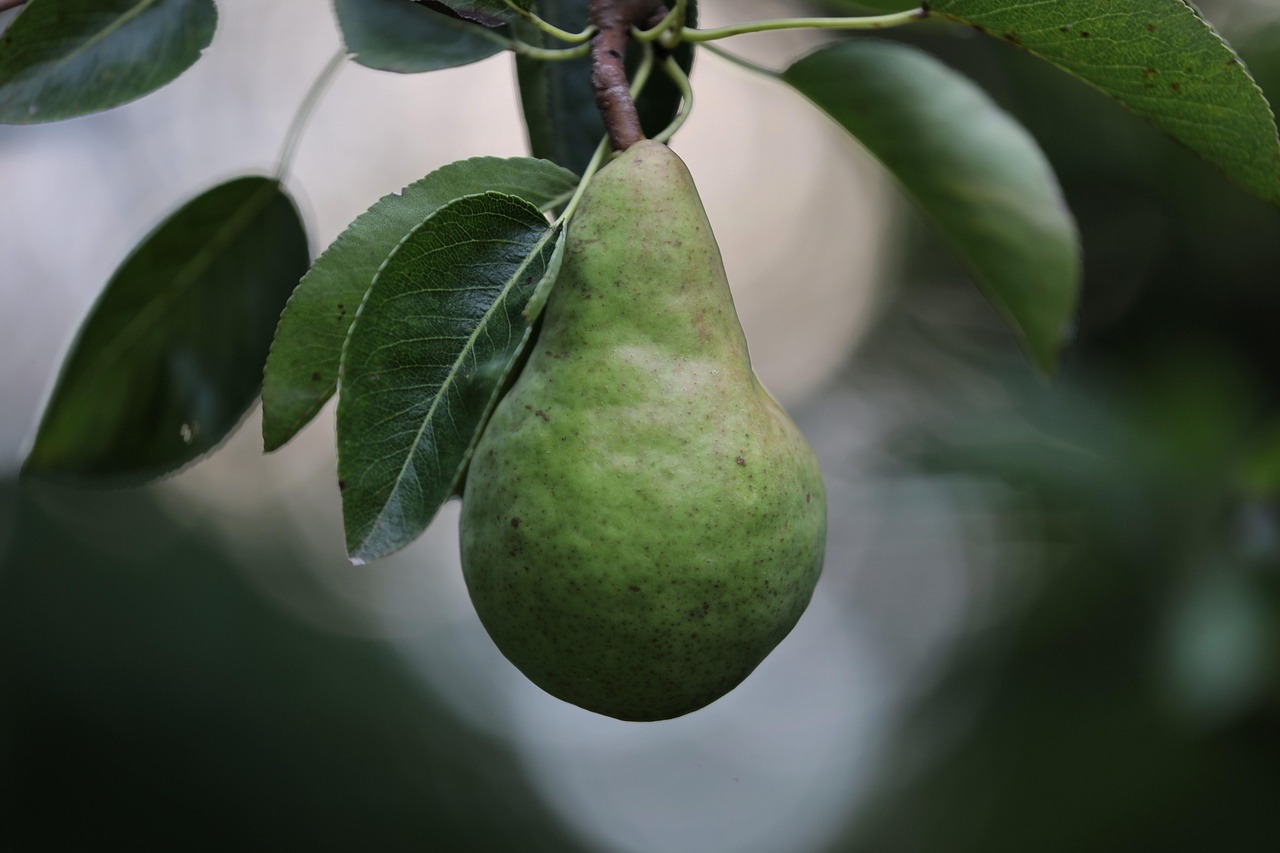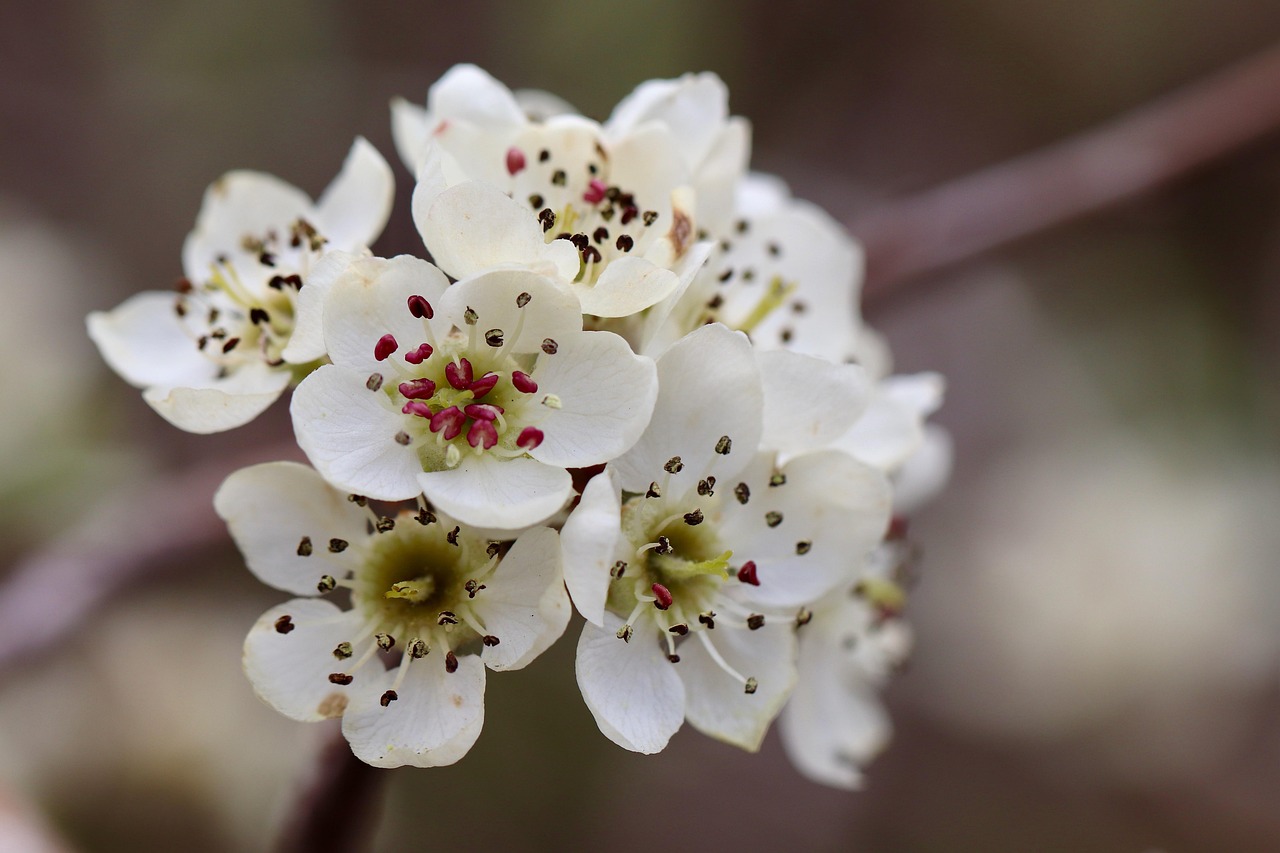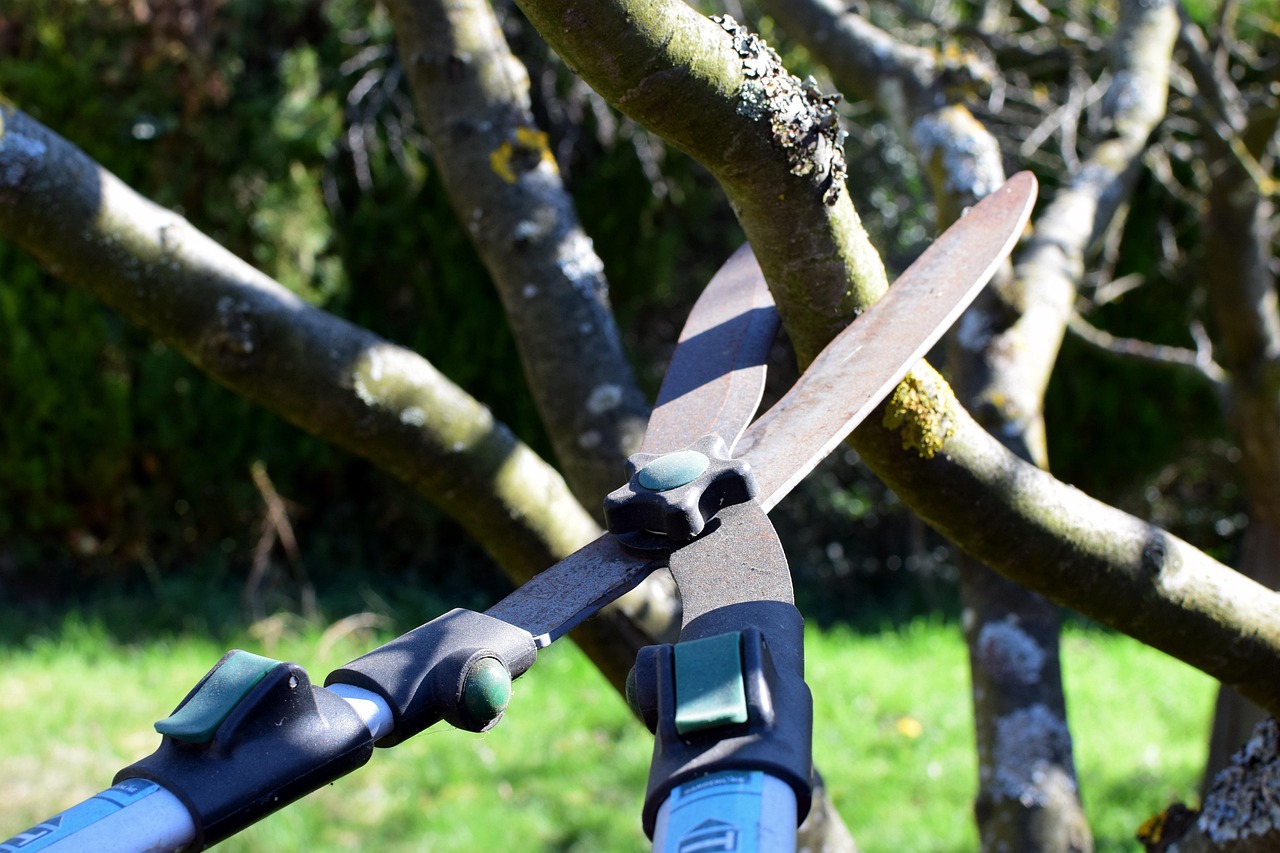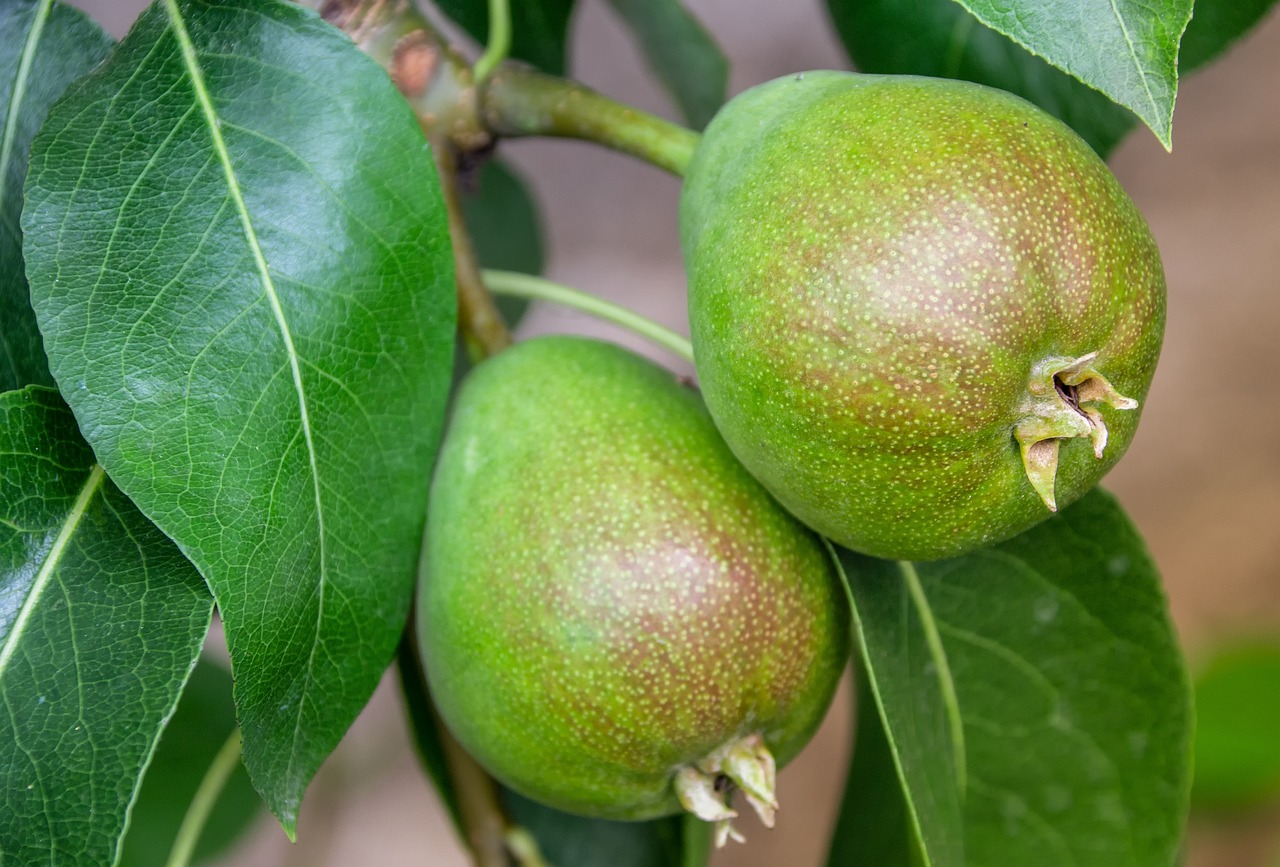Pear tree pruning is essential for enhancing resistance against pests and diseases. Proper pruning improves airflow, reduces humidity, and encourages healthy growth, all of which help in minimizing the risk of infections and infestations.
Pear trees are cherished for their delicious fruit and beautiful blossoms. However, like all fruit trees, they are susceptible to various pests and diseases that can threaten their health and productivity. Understanding how to effectively prune pear trees is crucial for maintaining their vitality and ensuring a bountiful harvest. Pruning not only shapes the tree’s structure but also significantly impacts its ability to resist harmful organisms.

There are several key benefits to pruning pear trees, particularly in relation to pest and disease management. Properly pruned trees allow for better sunlight penetration and air circulation. This is important because many diseases thrive in damp, shaded environments. By keeping the interior of the tree open, you can create conditions that are less favorable for pathogens and pests.
Understanding the Importance of Pruning
Pruning pear trees involves removing specific branches and shoots to promote healthy growth. It is not just about aesthetics; it plays a vital role in the overall health of the tree. Here are some of the main reasons why pruning is essential:
- Improved Airflow: Adequate spacing between branches helps to reduce humidity levels within the canopy.
- Enhanced Sunlight Exposure: Sunlight is necessary for photosynthesis, which is crucial for the tree’s energy production.
- Control of Growth: Pruning helps manage the size and shape of the tree, making it easier to harvest fruit.
- Reduction of Disease Risk: Removing infected or dead wood minimizes sources of disease.
- Increased Fruit Quality: Well-pruned trees often produce larger and healthier fruit.
The timing and technique of pruning are equally important. The best time to prune pear trees is during the late winter or early spring when they are still dormant. This timing helps reduce stress on the tree and allows for optimal healing. Pruning during this period also makes it easier to see the structure of the tree without leaves obstructing your view.

Common Pests and Diseases Affecting Pear Trees
Pear trees are vulnerable to various pests and diseases that can cause significant damage. Understanding these threats is crucial for effective management through pruning. Some common issues include:
| Pest/Disease | Description | Impact |
|---|---|---|
| Fire Blight | A bacterial disease causing branches to wilt and turn black. | Can kill limbs and severely weaken the tree. |
| Codling Moth | A pest that burrows into developing fruit. | Results in damaged fruit and reduced yield. |
| Scab | A fungal infection leading to dark spots on leaves and fruit. | Affects photosynthesis and fruit quality. |
| Spider Mites | Tiny pests that suck sap from leaves. | Can cause leaf drop and weaken the tree. |
Addressing these threats requires a proactive approach. Regular inspections can help you identify any signs of trouble early on. If pests or diseases are detected, immediate action is vital to prevent their spread. Pruning infected branches is one of the most effective ways to manage these issues and protect the overall health of the tree.
Techniques for Effective Pruning
To achieve the best results when pruning pear trees, it’s essential to use proper techniques. Here are some guidelines to follow:

- Use Sharp Tools: Always use clean, sharp pruning shears or saws to make clean cuts. This reduces stress on the tree.
- Cut at an Angle: Make cuts at a 45-degree angle to help water run off and prevent rot.
- Aim for Balance: Focus on creating an open center while maintaining a balanced canopy.
- Remove Dead or Diseased Wood: Cut back any branches that show signs of disease or damage immediately.
- Thin Out Crowded Areas: If branches are too close together, remove some to improve airflow.
By following these techniques, you can effectively prune your pear trees in a way that promotes health and resilience against pests and diseases. With careful attention to detail, you can ensure that your pear trees thrive for many years to come.
Seasonal Pruning Considerations
Understanding the seasonal aspects of pruning is vital for effective pear tree management. Each season presents unique challenges and opportunities that can influence the health of your trees. Here, we will discuss the different seasons and how they impact pruning strategies.
Winter Pruning
Winter is the most recommended time for pruning pear trees. During this dormant period, the trees are less susceptible to disease and stress. Here are some critical aspects to consider when pruning in winter:

- Timing: Aim to prune during late winter, just before new growth begins. This is typically between late February and early March, depending on your local climate.
- Visibility: Without leaves, the tree’s structure is more visible, making it easier to identify which branches need removal.
- Healing: Pruning in winter allows for quicker healing as the tree awakens in spring.
Spring Pruning
Spring is another time when pruning may be necessary, particularly to address specific issues:
- Inspect for Damage: After winter, inspect the tree for any damage caused by frost or snow. Remove any broken or damaged branches.
- Thinning: If you notice overcrowding as new growth begins, perform light thinning to improve airflow without compromising the tree’s energy.
- Shape Maintenance: Spring can also be a time for maintaining shape, especially if you want a particular form for your tree.
Summer Pruning
Summer pruning is usually less common but can be beneficial in specific circumstances:
- Controlling Growth: If your pear tree has grown too vigorous, summer pruning can help control excessive growth and maintain the desired shape.
- Removing Suckers: This is a good time to remove suckers and water sprouts that divert energy from fruit production.
- Pest Management: Pruning in summer can also help manage pest populations by removing infested branches early.
Pest and Disease Monitoring
Regular monitoring of your pear trees is essential for early detection of pests and diseases. This proactive approach allows you to take timely action and minimize damage. Here are some steps to incorporate into your monitoring routine:
- Visual Inspections: Conduct regular checks of leaves, branches, and fruit for any signs of pests or diseases. Look for discoloration, wilting, or unusual markings.
- Using Traps: Consider using sticky traps to capture flying pests. This can help identify infestations before they become severe.
- Check Soil Health: Healthy soil promotes strong trees. Test your soil regularly and amend it as necessary to support tree health.
Pruning Tools and Safety Measures
Using the right tools is essential not only for effective pruning but also for ensuring your safety. Here are some common tools used for pruning pear trees:
| Tool | Description | Best For |
|---|---|---|
| Hand Pruners | Small scissors-like tools for detailed cuts. | Thin branches and small growths. |
| Loppers | Larger cutting tools with long handles. | Medium branches that are difficult to reach with hand pruners. |
| Saws | Used for larger branches; available in various sizes. | Thicker branches that cannot be cut with pruners or loppers. |
| Tree Climbing Gear | Safety equipment for reaching higher branches. | Pruning tall trees safely. |
Safety should always be a priority when pruning pear trees. Here are some essential safety measures to follow:
- Wear Protective Gear: Always wear gloves, safety goggles, and a hard hat if working with larger branches or climbing.
- Be Aware of Your Surroundings: Ensure there is no one nearby when cutting branches that could fall or swing unexpectedly.
- Maintain Tools: Keep all tools sharp and clean to prevent injury and ensure efficient cutting.
By understanding seasonal considerations, monitoring for pests and diseases, and using the right tools safely, you can enhance the effectiveness of your pruning efforts. These practices will contribute to healthier pear trees that are better equipped to resist pests and diseases while producing abundant fruits.
Advanced Pruning Techniques for Pear Trees
Once you understand the basics of pruning, you may want to explore advanced techniques that can further enhance the health and productivity of your pear trees. These methods focus on specific goals such as maximizing fruit production and improving disease resistance.
Crown Thinning
Crown thinning is an advanced technique that involves selectively removing branches to reduce overcrowding within the tree canopy. This practice encourages better airflow and sunlight penetration, which is essential for maintaining healthy foliage and fruit:
- Improves Airflow: By creating space between branches, you can reduce humidity levels, which lowers the risk of fungal diseases.
- Enhances Sunlight Penetration: More sunlight reaches the inner branches, promoting even growth and fruit development.
- Reduces Pest Habitats: A well-thinned crown discourages pests from finding sheltered areas to nest or lay eggs.
To thin the crown effectively, focus on removing branches that are crossing or rubbing against each other. Aim for a balanced structure with an open center to promote healthy growth.
Crown Reduction
Crown reduction involves shortening the height of the tree or its branches. This technique is particularly useful for maintaining smaller trees or for reducing the risk of branch breakage due to heavy fruit loads:
- Maintains Manageable Size: Keeps trees at a height that is easy to harvest and maintain.
- Strengthens Branches: Shortening branches can make them less likely to break under the weight of fruit.
- Promotes Healthier Growth: Encourages new growth that can be more resistant to pests and diseases.
When performing crown reduction, make cuts just above a healthy bud or lateral branch. This will promote healthy new growth in the desired direction.
Specific Pruning Strategies for Pest and Disease Resistance
Targeted pruning strategies can significantly improve the resistance of pear trees to pests and diseases. Here are several strategies to consider:
Removing Infected Wood
Identifying and removing infected wood is crucial for preventing the spread of diseases such as fire blight. Follow these steps:
- Inspect Frequently: Regularly check your trees for signs of disease, such as wilting or discolored leaves.
- Prune Affected Areas: Cut back infected branches at least 8-12 inches below the visibly affected area.
- Dispose Properly: Burn or dispose of cuttings away from your garden to prevent re-infection.
Disease-Resistant Varieties
Selecting disease-resistant pear tree varieties can also reduce your pruning workload. Some varieties have been bred specifically for resistance to common diseases like fire blight and pear scab. Here are a few popular options:
| Variety | Disease Resistance | Notes |
|---|---|---|
| Bartlett | Moderate | Popular variety; good for fresh eating. |
| Harrow Sweet | High | Excellent disease resistance; sweet flavor. |
| Pearon | Very High | Highly resistant to fire blight. |
| Bosc | Moderate | Good flavor; requires careful management. |
The Role of Fertilization in Disease Resistance
A well-fertilized pear tree is more resilient to pests and diseases. Proper fertilization supports overall tree health, which can enhance resistance. Here are some important considerations:
- Nutrient Balance: Ensure your tree receives a balanced mix of nutrients, particularly nitrogen, phosphorus, and potassium.
- Soil Testing: Conduct soil tests to determine nutrient levels and deficiencies. This will guide your fertilization efforts.
- Organic Options: Consider organic fertilizers like compost or well-rotted manure to improve soil health sustainably.
The timing of fertilization is also crucial. Early spring is typically the best time to fertilize pear trees as they prepare for new growth. Avoid fertilizing late in the season, as this can encourage tender new growth that may be vulnerable to frost damage.
Irrigation Practices and Their Impact on Tree Health
Irrigation plays a significant role in maintaining healthy pear trees that can resist pests and diseases. Proper watering practices can strengthen root systems and enhance overall tree vitality:
- Avoid Overwatering: Excess moisture can lead to root rot and create a favorable environment for pathogens.
- Deep Watering: Water deeply but infrequently to encourage deep root growth. This makes trees more resilient during dry spells.
- Irrigation Timing: Water in the early morning or late afternoon to reduce evaporation losses and keep foliage dry during peak humidity.
Implementing these advanced pruning techniques and considering factors such as fertilization and irrigation can significantly enhance the health of your pear trees. By focusing on these aspects, you can create an environment that minimizes the risk of pests and diseases while ensuring a fruitful harvest.
Integrating Integrated Pest Management (IPM)
In addition to proper pruning techniques and cultural practices like fertilization and irrigation, integrating an Integrated Pest Management (IPM) approach can greatly enhance the resilience of pear trees against pests and diseases. IPM is a holistic approach that combines various strategies to manage pests in an environmentally friendly way.
Components of IPM for Pear Trees
Implementing IPM involves several key components that work together to reduce pest pressure:
- Monitoring and Identification: Regularly inspect trees for pests, diseases, and beneficial insects. Correct identification is essential to choose the appropriate management strategy.
- Preventative Measures: Implement cultural practices such as crop rotation and planting disease-resistant varieties to prevent pest establishment.
- Biological Control: Encourage beneficial insects like ladybugs and lacewings that prey on harmful pests.
- Mechanical Controls: Use physical barriers like row covers or traps to keep pests away from your trees.
- Chemical Controls: When necessary, use pesticides as a last resort. Choose targeted treatments that are effective against specific pests while minimizing harm to beneficial organisms.
By incorporating IPM into your pear tree care routine, you can create a balanced ecosystem that supports plant health while keeping pest populations in check.
Seasonal Care Beyond Pruning
Seasonal care should extend beyond just pruning. Each season presents unique opportunities to support your pear trees in resisting pests and diseases:
Spring Care
In spring, as new growth begins, it is crucial to:
- Apply Mulch: A layer of organic mulch helps retain moisture and suppress weeds which can harbor pests.
- Fertilize Wisely: Apply balanced fertilizers based on soil tests to support healthy growth without over-fertilizing.
- Pest Monitoring: Keep a close eye on emerging pests. Early intervention can prevent larger infestations later in the season.
Summer Care
During the summer months, focus on:
- Irrigation Management: Ensure consistent watering, especially during dry spells, to reduce stress on trees.
- Canopy Management: Continue thinning as needed to maintain airflow and light penetration in the canopy.
- Disease Monitoring: Watch for signs of diseases like powdery mildew and treat them promptly.
Fall Care
As fall approaches, it is time to prepare your pear trees for dormancy:
- Final Pruning: Complete any necessary pruning before the trees enter dormancy to reduce the risk of disease overwintering.
- Soil Preparation: Consider adding organic matter or compost to improve soil health for the following season.
- Pest Inspection: Inspect for any overwintering pests and remove any infested debris from around the trees.
Final Thoughts
Pruning pear trees for resistance against pests and diseases is not just about cutting branches; it involves a comprehensive approach that includes monitoring, cultural practices, and the integration of various management strategies. By understanding the importance of seasonal care, utilizing advanced pruning techniques, and adopting IPM principles, you can significantly enhance the health of your pear trees.
The key takeaways from this discussion include the critical role of proper pruning techniques in promoting airflow and sunlight penetration, the importance of monitoring for pests and diseases throughout the year, and the benefits of integrating cultural practices like fertilization and irrigation. By following these guidelines, you can establish a thriving environment for your pear trees that minimizes the risk of pest and disease issues while maximizing fruit production.
With careful planning and ongoing management, your pear trees can flourish, providing you with delicious fruit for many seasons to come. Embrace these practices, and enjoy the rewards of a healthy orchard that stands resilient against the challenges posed by pests and diseases.
